Quick search
When cycling through the streets of Europe, especially during the dusky winter months, one thing is clear: lighting is essential. But why is it so important, and how do you choose the right lighting for your bike?
Legal requirements: bike lighting in Europe
In Europe, it is legally required to have a white or yellow light at the front and a red light at the back of your bike. This applies to all bikes, including electric ones. Many electric bikes come with built-in lighting, but does it always meet the standard? It’s up to you to determine if this is enough for your safety.
Failure to comply with this law can result in a fine. For each missing light, the police can issue a fine of €58. Don’t be surprised; even with small makeshift lights, you can receive this fine. A light must be visible up to 200m away. So, a small cheap makeshift light is a wasted effort.
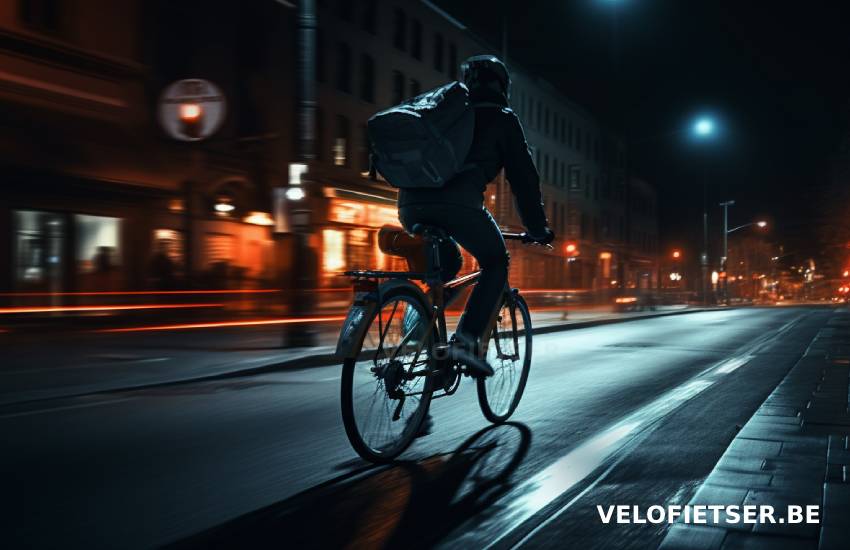
How much light or lumens does your bike light need?
In urban areas, the most important thing is to be seen. Think of an actor on stage: the audience (cars and other road users) must be able to see him. Outside the city, it is also essential to illuminate the road ahead. Therefore, you need more lumens outside the city, as in the city, this can lead to blinding others.
The power of a light is expressed in Lumens and Lux. But your surroundings also influence this. A light of 1000 lumens may look very bright in a room, but in a forest, it may appear differently, depending on how the light is dispersed.
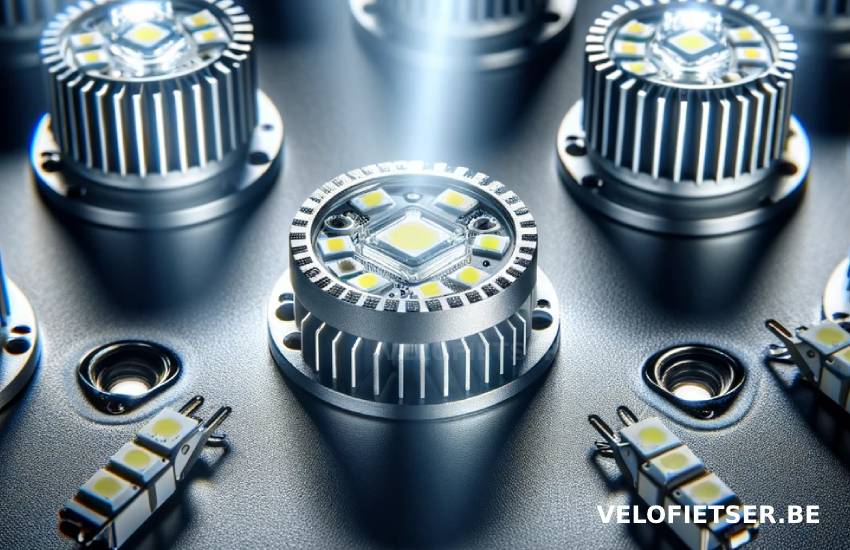
Bike Lights for Mountain Biking (at Night)
Mountain biking in the dark is a real challenge. You can’t see anything, the forest barely lets any light through, and the trail becomes almost invisible. Here, you not only want a lot of lumens but also a wide beam angle (or flood angle).
For mountain biking, you need a front light with between 600 (evening) and 1600 lumens (pitch dark). Rear lights for MTB are slightly less critical, ranging from ten to forty lumens or even more. Especially the front light is crucial here, not just to be seen, but to see.
If you have some budget, opt for quality. A high lumen output means your light will get warm. The housing must be able to handle this; a plastic light will break quickly. Also, the attachment (mount) is important; a light that you can easily adjust (and remove) is handy in the forest. When you stop for a moment, things can quickly get eerie. Your bike light can then serve as a flashlight.
Front and Rear Lights for City Bikes
In the city, there are many other light sources: streetlights, cars, shops. Here, the goal is to stand out among all these lights. A front light with a flashing function, between 150 and 400 lumens, is ideal.
If it’s not always well-lit and you want to illuminate more, you can choose a light up to 850 lumens. Be aware that these can blind oncoming traffic. Make sure the bike light is sufficiently downward-directed, and that you also have a mode with fewer lumens to ensure your safety.
Rear lights in the city typically range from 30 to 100 lumens. Here too, a flashing function is important to make the bike stand out among all the other city lights. There are also special bike lights that provide additional illumination on the ground around the bike with the help of a laser. Handy extras, although these lights are usually slightly more expensive.
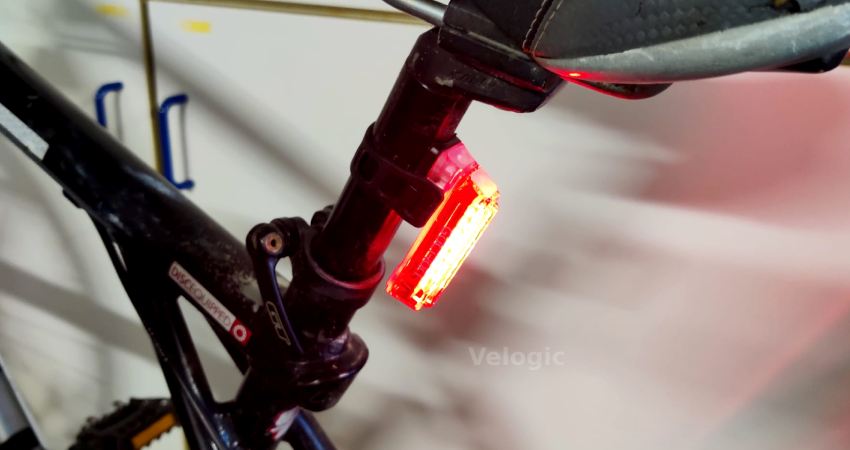
Biking Outside the City
In Europe, street lighting is now turned off at night. Then it gets darker, and you need a stronger front light to see the road. A front light between 400 and 850 lumens is recommended.
Much depends on the type of roads, street lighting, and when you will be cycling. If you have a varied route, you’ll be fine with a versatile light (high and low lumen settings). One that has different settings, or a smart function that determines the light automatically.
Rear lights are often around forty lumens but can go up to 150 lumens. A driver (on the open road) can see further than in the city. With a more powerful rear light, you are visible longer (from farther away). Smart functions are also available here, such as a brake light or turn signals.
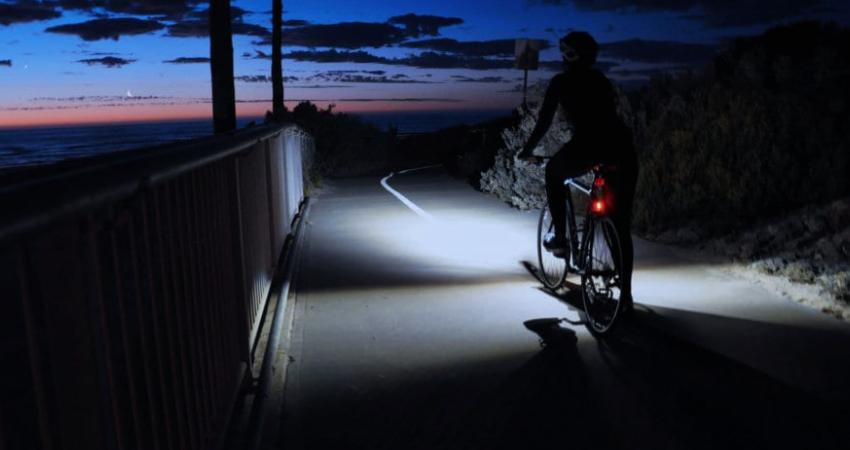
Lumen and Beam Angle: What Do They Mean?
Lumen is a measure of the brightness of a light. Imagine pouring a bucket of water over a floor. The more water (lumens) you have, the more the floor is covered. It’s not a simple explanation or calculation. Many lights claiming to have 1000 lumens are actually much weaker.
Can a light be too bright? Absolutely! The lumen determines the power of the light. Anything above 400 lumens is not pleasant for the eyes. Lights with +800 lumens can seriously blind an oncoming driver. A headlight pointing directly upward goes straight into pedestrians’ sightline. To prevent this, you must aim your beam correctly (read: sufficiently downward). Your beam should always be directed toward the ground and angled to hit the curb.
Light is also expressed in lux. This refers to the intensity of the light on a surface (e.g., a wall), indicating how many lumens reach the surface.
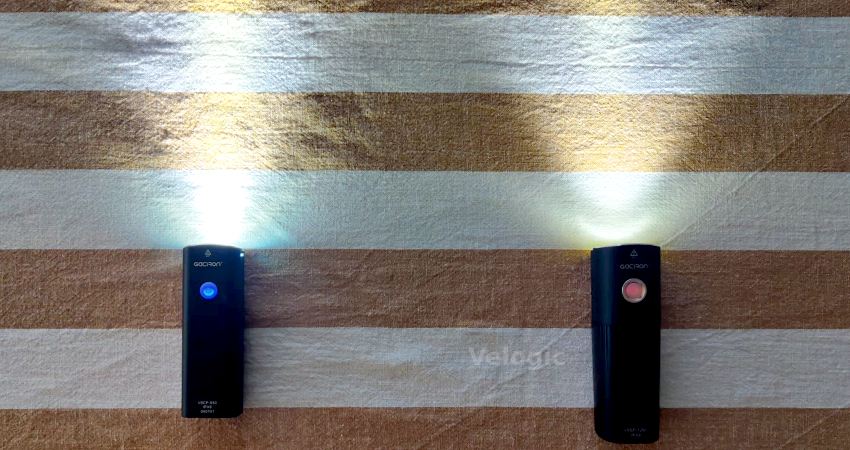
Beam angle, beam spread, radiation angle, or flood angle (all synonyms) determines how wide that water (light) spreads. A wide flood angle means the light spreads over a larger area, while a narrow angle gives a more focused beam. A well-distributed beam of light can be more effective than a super-bright spotlight.
This is especially important in urban areas where you not only want to illuminate the road ahead but also be seen by other road users from all angles, including from the side.
Other considerations when choosing a bike light:
- Size and weight: For sport cyclists, a light and compact light is ideal.
- Mounting options: Some lights simply clip onto your bike, while others require a fixed mount.
- Light modes: Some lights have different modes, such as flashing or constant, which can be useful in various conditions.
- Charging options: USB-rechargeable lights are convenient because you can easily recharge them, but battery-powered lights can last longer.
- Water resistance: Most northern parts of Europe are known for rainy days, so a waterproof light is a must. Rain also impairs visibility. A slightly more powerful light can therefore have benefits in foggy or rainy weather.
Choosing the right bike light is not only a matter of legal compliance but also of personal safety. You’re not benefiting from legal regulations if a driver doesn’t see you passing by. Safety first may sound cliché but is crucial nonetheless.

